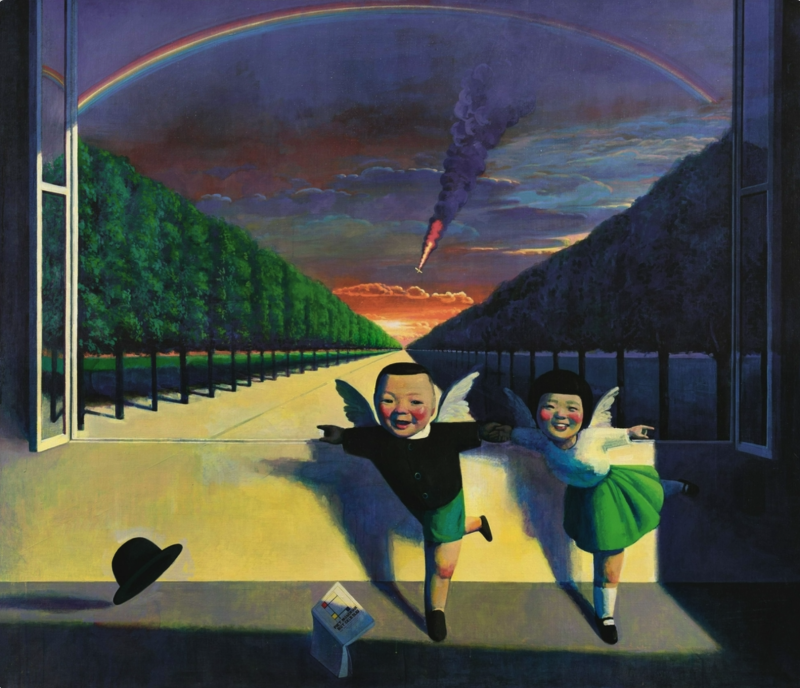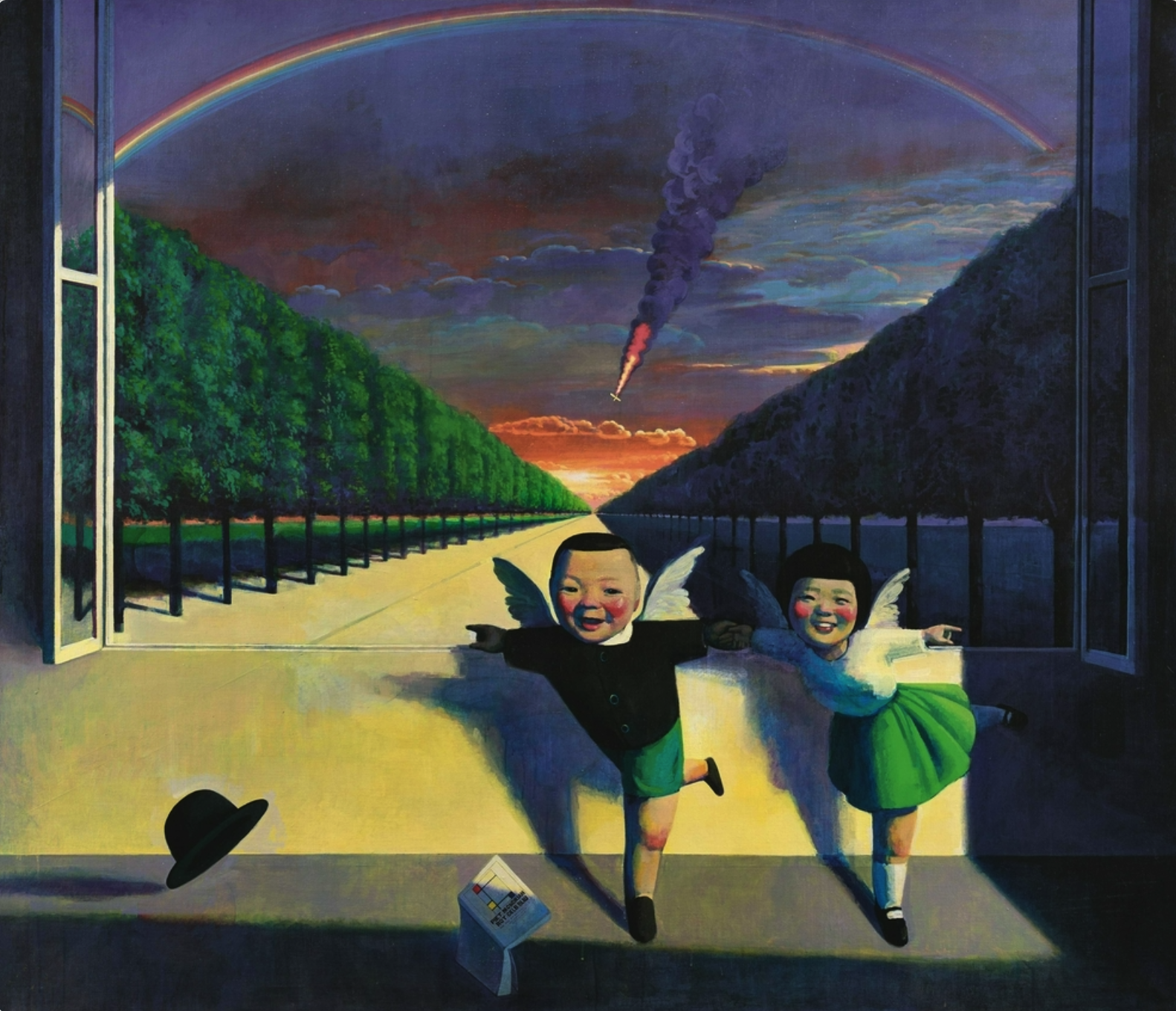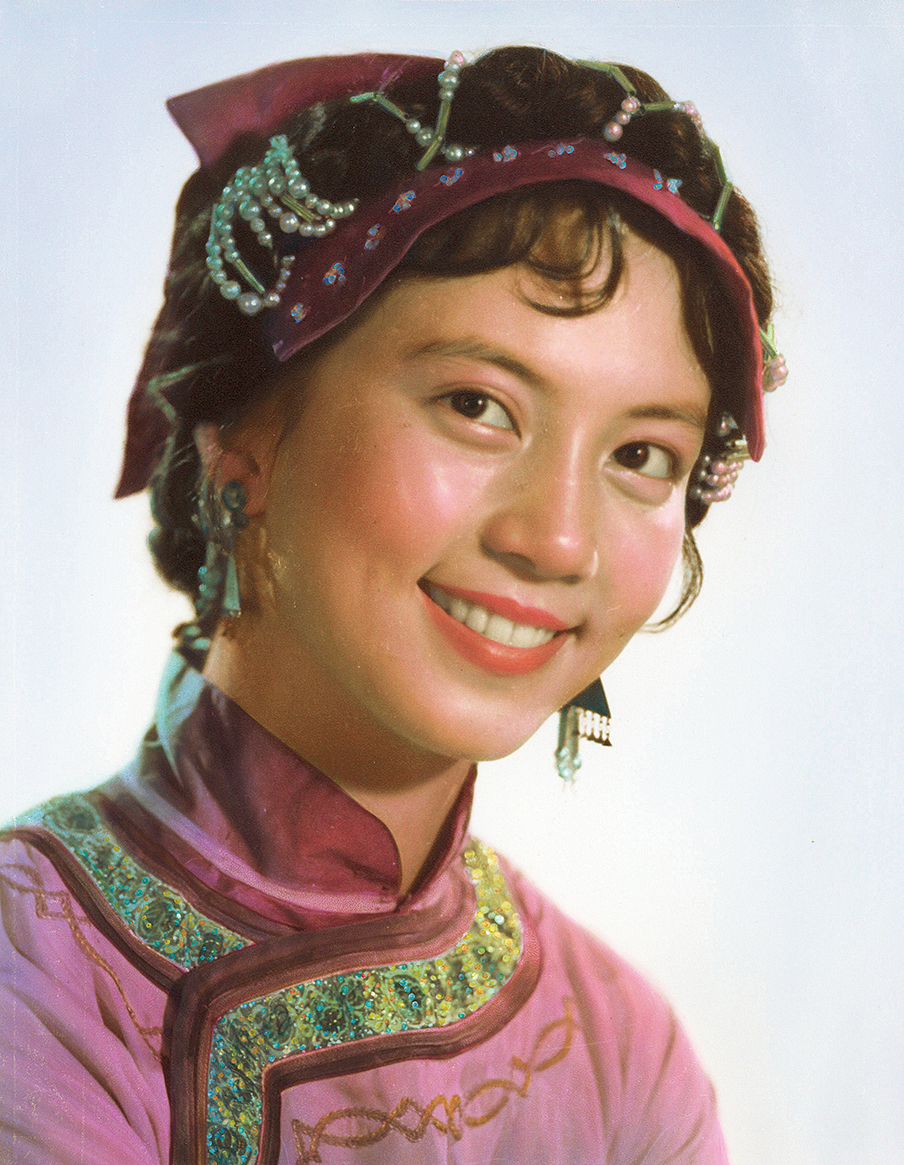
Liu Ye
Golden Avenue
1995
Acrylic on Canvas
Liu Ye was born in 1964 in Beijing. In 1980, he enrolled at the Beijing School of Arts and Crafts to study industrial design. In 1986, he was admitted to the Mural Painting Department of the Central Academy of Fine Arts. In late 1989, he traveled to Germany to study at Berlin University of the Arts. In 1990, he was introduced to early Northern Renaissance works, as well as the paintings of Giorgio Morandi and Balthus. He was instantly captivated, which helped him define his own artistic style. From that point on, his work began to attract attention, leading to multiple exhibition invitations. In 1994, after completing his master’s degree, he returned to China, embarking on a unique artistic exploration within the realm of contemporary Chinese art. Liu’s paintings are characterized by a playful, bright aesthetic with a surrealist undertone. He skillfully employs a fairy-tale-like visual language to express perspectives on the adult spiritual world.
Liu Ye is a contemporary Chinese painter known for his playful yet metaphorical approach to oil painting. At the center of Golden Avenue is a wide, bright yellow road that stretches straight into the distance, flanked by neatly arranged trees. The vivid yellow color symbolizes the Golden Avenue. The horizon is filled with dark storm clouds, and a plane is seen crashing, trailing a thick plume of black smoke. In the foreground, two angelic children with white wings are blissfully playing, seemingly unaware of the scene unfolding behind them. Floating above them are a Mondrian art book and a bowler hat, evoking Magritte’s surrealist imagery. The book’s cover features Mondrian’s Composition with Red, Blue and Yellow (1927), a work that epitomizes his color theory.
Liu constructs a contrast-based aesthetic in this work. On one hand, the Golden Avenue represents an optimistic vision of the future; on the other, the darkened sky and falling airplane suggest underlying unease and crisis. The two children, absorbed in their play, serve as a reminder that an overly idealistic belief in progress can sometimes blind people to the harsh realities of the world. As we move forward, can we truly journey toward our ideal future without worry or hesitation?



